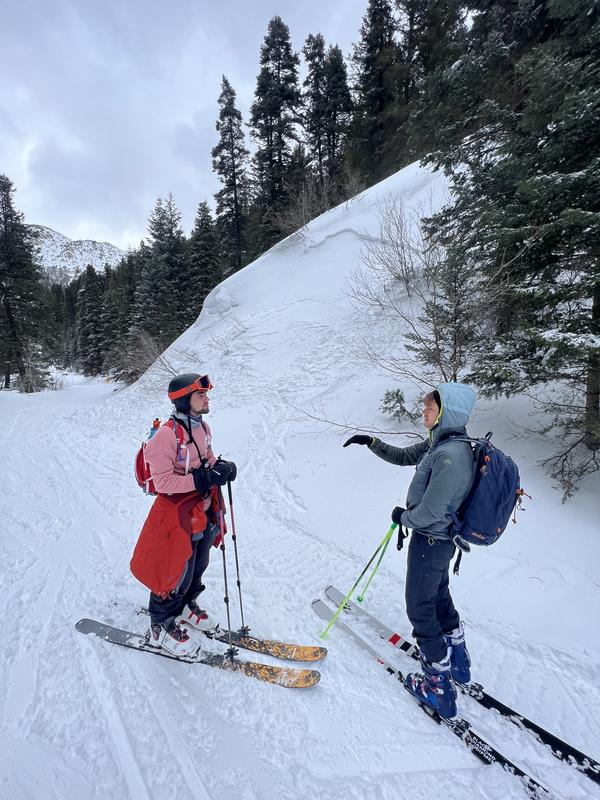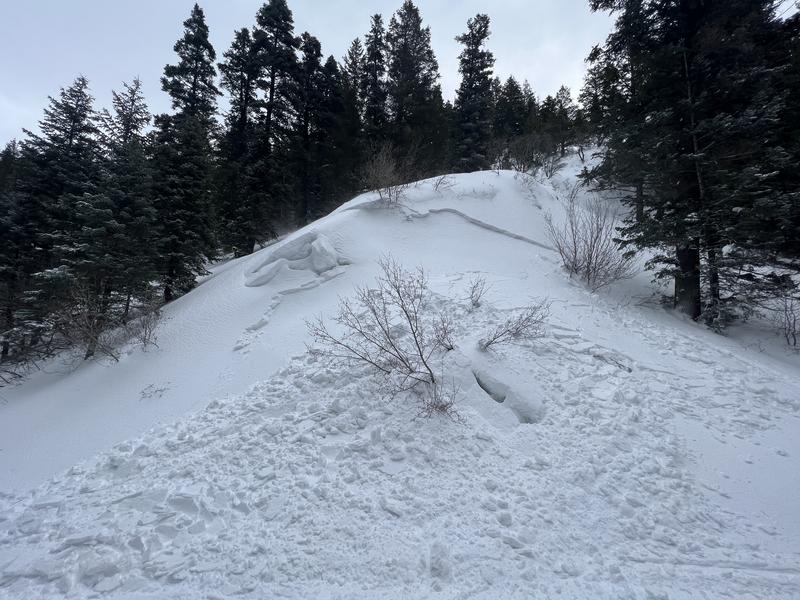We did not notice any shooting cracks, or experience any collapsing from storm slab avalanche problems in Millcreek canyon today. We saw one very small (25' x 25'), and shallow natural storm slab that seemed to be from late last night or early this morning. This natural storm slab was an isolated pocket did not propagate into well connected avalanche terrain. We saw one loose sluff avalanche, I was surprised we did not see more natural loose sluffs in ther steeper terrain.
We did notice two structural instabilities within the new storm snow. Neither of these weak layers had enough of a cohesive slab sitting on top to cause any propagation. We found an obvious a graupel layer within the new snow that we first identified at 7000', and was present all the way up to 9000'. (It may very well be present above and below those elevations, we just noticed it there.)
At the base of the Alexander basin (7200'), there was 8" of storm snow sitting on a sun crust. The distinct graupel layer was right in the middle of this new snow, 4" from the snow surface. The storm snow on top of the graupel was 4" of unconsolidated pow, and was not slabby enough to produce any results on a shovel tilt test.
At the base of Wilson Glades (8300'), we dug a NW facing pit. The graupel layer was still present, 5" below the surface. We got the graupel layer to fail on the first hit of a compression test (CT1) with Q3 shear quality. When we performed an ECT, we got ECTN8 on a density change within the new snow, 8" down with a Q3 shear.
Finally, we performed two shovel tilt tests at this pit location, wanting to see how the graupel layer and the density change layer would react. On the first test, we had failure on both graupel and density change layer with easy taps, Q3 shears. On the second shovel tilt test, we only had a failure on the density change layer after a couple light taps. This last shovel tilt test was interesting because the shear quality was Q2. With a more cohesive storm or wind slab sitting on top, I suspect this density change layer (8" down) has the possibility to fail and propagate (See video).
I suspect the storm slab avalanche problem will become increasingly dangerous, large and reactive with tonight's new snow, especially given the snowpack structure described above.








